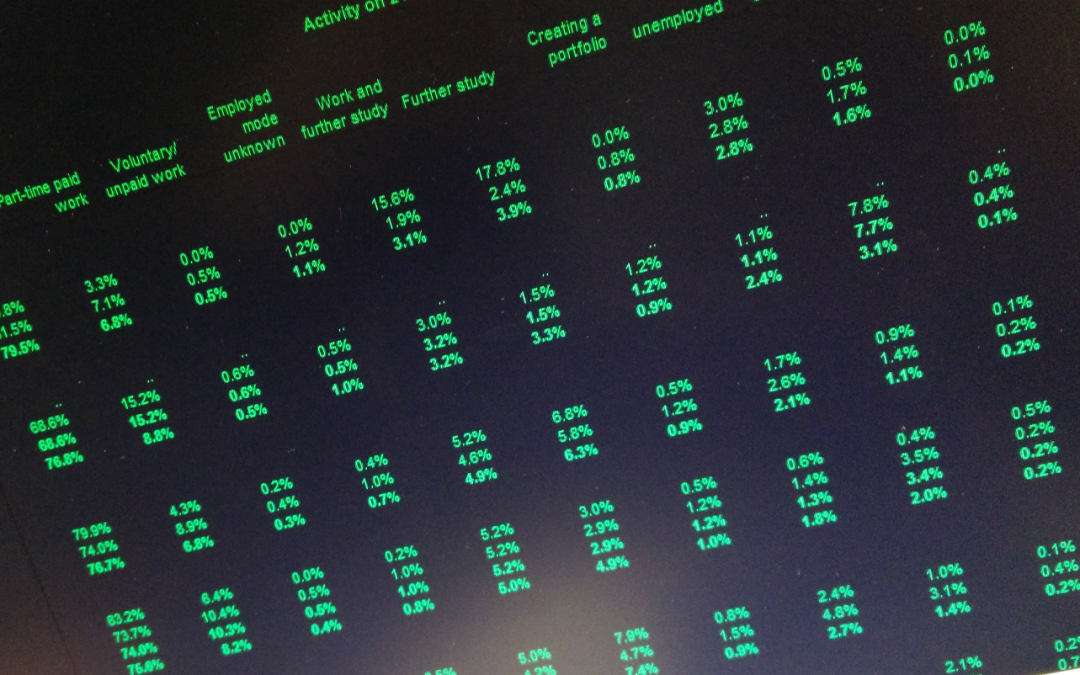What are higher education data for? And whom do they serve? These questions were prompted by reflecting on and comparing what was said about data in the 2011 White Paper, Students at the heart of the system, and this month’s Green Paper, Fulfilling Our Potential.
In 2011, references to data were in the context of stripping back regulation. Data collection was a regulatory burden, a barrier to efficiency – something “done to” institutions, in an uncoordinated way by funders and regulatory bodies. The White Paper had an answer, asking the relevant sector bodies to “…to redesign the information landscape for higher education in order to arrive at a new system that meets the needs of a wider group of users; reduces the duplication that currently exists, and results in timelier and more relevant data.”
The main problems the sector bodies found were:
- A lack of coordination and sharing amongst data collectors leading to many requests for data often with frustratingly different definitions. This forces uncoordinated behaviour onto institutions that have to treat each data supply as an ad-hoc request.
- at a system level it is inefficient and ineffective;
- No forum or mechanism to bring data collectors together
- Variable standards of data capability
It was an inefficient and ineffective system. Set up to carry out the ambitious work of redesign, the Higher Education Data and Information Improvement Programme (HEDIIP) research showed there was great scope for standardisation and rationalisation of data collections – 525 solely HE data collections (so that’s excluding things like reporting to Companies House). And although prompted by an English White Paper, this had to be addressed as a UK-wide issue since so many of the sector’s data processes take place across the 4 administrations.
Scroll forward to 2015 and the Green Paper takes a different tack. The availability of data now “underpins public policy development and research”. Data are a useful tool for fixing hard policy problems – in this case widening access to, and success in, higher education. But the problem this time is that those who have the data aren’t releasing it and sharing it and ensuring it is comparable. Policy is being held back so government wants “to explore whether to establish a power to require bodies providing a service connected with the provision of higher education to provide relevant data and information to help better target efforts on widening access and success”.
The missing perspective from both documents is that sensible data collection, management and use might drive institutional performance – might be something “done by and for” institutions. While that perspective might have been missing from the 2011 White Paper, it is present in the process by which the work has been taken forward. Andy Youell gave an update to GuildHE Council in September and made a powerful case for how HEDIIP is facilitating change. Taking this agenda out of space occupied only by data specialists and getting it onto the desks of strategists and policy-makers. And there is a lot to play for.
The recent (annual) PWC survey of HEI leaders suggests over two-thirds of institutions have made little or no progress in developing student analytics in spite of this being identified as a key development for the sector as a whole. https://www.paconsulting.com/our-thinking/higher-education-report-2015/ . And NESTA’s report (apologies in advance for the neologisms – not mine) on the rise of the “Datavores” https://www.nesta.org.uk/publications/skills-datavores-talent-and-data-revolution shows how the ‘big data explosion’ requires new analytics skills to transform big datasets into good decisions and innovative products and services. The report shows that data-active companies are over 10% more productive than “Dataphobes” after controlling for other factors.
How to meet those challenges? The HEDIIP vision for a redesigned HE information landscape – that meets the objectives set out in the 2011 White Paper – is made up of 4 key elements:
- Collective and consensual governance of the landscape
- Adoption of a common data language
- Rationalisation of data collections through a transformed HESA – HESA is currently consulting on the Data Futures proposals which would deliver this element;
- Improvement in data capability
For institutions, the HEDIIP data capability strand is a rich source of support. On my visits to GuildHE members, I have seen some amazing examples of data capability and how it is driving institutional strategy and operational planning. But data skills are at a premium and for many institutions, getting the right combination of skills and institutional capacity is likely to be a challenge for some time to come.

